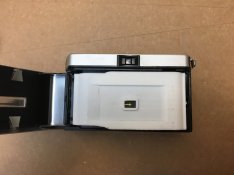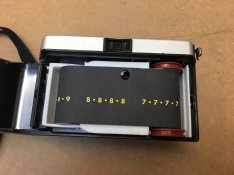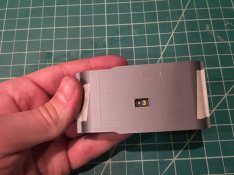Brockley
Member
Hello all,
This is my first post here on Photrio, however I have been lurking here for a few years. I'm a senior year industrial design student and have been shooting, developing, and experimenting with film for a little over 2 years. I'm always looking for new photography projects so I've researched and played around with a bunch of different processes and formats, from traditional 35mm to tintypes, pinhole photography, direct positives, camera/lens building and more!
One of my recent ongoing projects involves reviving 126 film for a sort of ultra-small scale production run. I have reloaded old 126 cartridges with 35mm film and am familiar with the Fakmatic but I've never been satisfied with the results or experience of using either. To me, something identical to the original experience of using 126 film is ideal.
My original intention was to have the cartridge be manufactured from molded paper or laser-cut thin cardboard and I ideated in that direction for a while, however the cartridges were never satisfactory in terms of durability, light-tightedness, or ease of manufacture/loading so my current approach is to use a 3D-printed cartridge (this is the same way the Fakmatic is made). I designed the cartridge based on measurements from an original Kodak 126 cartridge with some alterations made to make it easier to 3D print as well as work better with my film/backing paper system.
Which brings me to the film and backing paper! In order to not waste film, my process involves slitting 120 film in half, creating two ~31mm strips of unperforated film. This gives just enough room for the ~28mm tall image created by 126 cameras. Frame registration is done completely with the backing paper. The system works very well, the only issue being the skill/time required to load the cartridge however I'm hoping to automate/semi-automate it soon.
My goal is to provide essentially completely new 126 cartridges, loaded with film, on a small scale for a price that is reasonable. I think it would be cool to offer the original 100 speed color negative film along with other film speeds and black & white. The film will be able to be developed at home on altered Patterson reels or by a company that does dip-and-dunk processing, such as TheDarkroom.
I'm very near the point where I would like to begin testing the cartridges on a larger scale, with as wide a variety of 126 cameras as possible. I'm posting this to gauge interest and see if a few 126 film enthusiasts would like to help me "field test" these 126 cartridges I've developed.
Thank you for taking the time to read this and I would appreciate any advice you can give. I can post pictures/progress if enough people show interest! Apologies if this is not posted in the correct place!
This is my first post here on Photrio, however I have been lurking here for a few years. I'm a senior year industrial design student and have been shooting, developing, and experimenting with film for a little over 2 years. I'm always looking for new photography projects so I've researched and played around with a bunch of different processes and formats, from traditional 35mm to tintypes, pinhole photography, direct positives, camera/lens building and more!
One of my recent ongoing projects involves reviving 126 film for a sort of ultra-small scale production run. I have reloaded old 126 cartridges with 35mm film and am familiar with the Fakmatic but I've never been satisfied with the results or experience of using either. To me, something identical to the original experience of using 126 film is ideal.
My original intention was to have the cartridge be manufactured from molded paper or laser-cut thin cardboard and I ideated in that direction for a while, however the cartridges were never satisfactory in terms of durability, light-tightedness, or ease of manufacture/loading so my current approach is to use a 3D-printed cartridge (this is the same way the Fakmatic is made). I designed the cartridge based on measurements from an original Kodak 126 cartridge with some alterations made to make it easier to 3D print as well as work better with my film/backing paper system.
Which brings me to the film and backing paper! In order to not waste film, my process involves slitting 120 film in half, creating two ~31mm strips of unperforated film. This gives just enough room for the ~28mm tall image created by 126 cameras. Frame registration is done completely with the backing paper. The system works very well, the only issue being the skill/time required to load the cartridge however I'm hoping to automate/semi-automate it soon.
My goal is to provide essentially completely new 126 cartridges, loaded with film, on a small scale for a price that is reasonable. I think it would be cool to offer the original 100 speed color negative film along with other film speeds and black & white. The film will be able to be developed at home on altered Patterson reels or by a company that does dip-and-dunk processing, such as TheDarkroom.
I'm very near the point where I would like to begin testing the cartridges on a larger scale, with as wide a variety of 126 cameras as possible. I'm posting this to gauge interest and see if a few 126 film enthusiasts would like to help me "field test" these 126 cartridges I've developed.
Thank you for taking the time to read this and I would appreciate any advice you can give. I can post pictures/progress if enough people show interest! Apologies if this is not posted in the correct place!





















